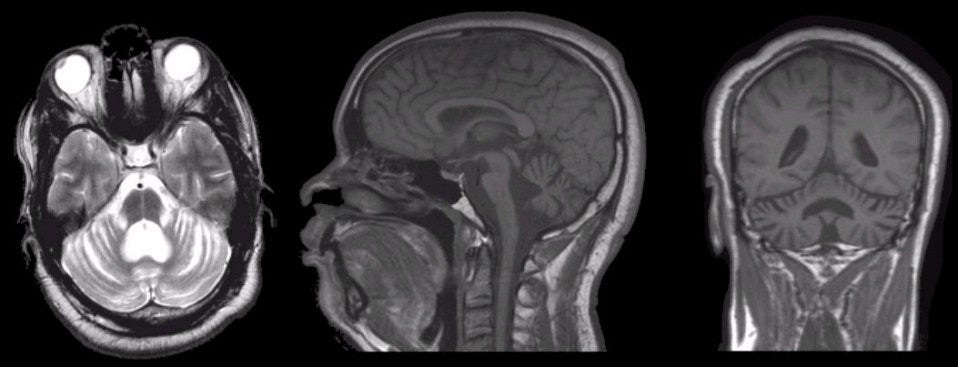
|
A 23 year-old man presented with slowly progressive gait and limb ataxia, slurred speech and nystagmus over 10 years. |

![]()
![]()
![]()
![]()
| Spinocerebellar Ataxia (SCA): (Left) T2-weighted axial MRI; (Middle) T1-weighted sagittal MRI; (Right) T1-weighted coronal MRI. Note the severe atrophy of the cerebellum and pons. This atrophy results in compensatory dilatation of the fourth ventricle and surrounding cisterns. These disorders, once termed olivopontocerebellar atrophy (OPCA), comprise a large group of inherited disorders characterized by progressive ataxia and brainstem signs. DNA analysis in this patient demonstrated SCA Type 2. SCA Type 2 typically manifests with progressive gait and limb ataxia, dysarthria, and slow saccadic eye movements. Some patients may develop ophthalmoparesis, extrapyramidal signs, areflexia, and cognitive dysfunction. The SCA-2 mutation is an expansion of an unstable CAG repeat located in the ataxin-2 gene on chromosome 12q24.1. |
Revised
12/02/06
Copyrighted 2006. David C Preston